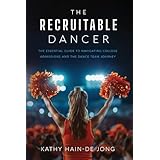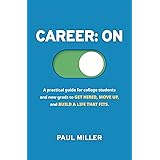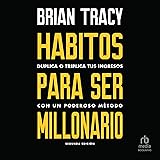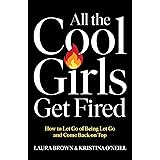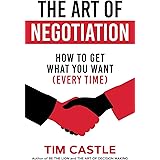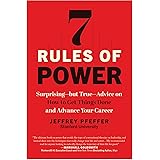Have you ever wondered just how ‘smart’ those AI resume screeners truly are? The recent viral story, which you just watched a fascinating demonstration of, showcases a truly unsettling ‘unethical resume hack’ that put the capabilities of leading AI models to the test. It raises critical questions about the future of hiring, the ethics of job applications, and the inherent vulnerabilities of artificial intelligence in high-stakes scenarios.
The experiment involved a seemingly simple yet deceptive trick: embedding a sentence in a fake resume using a white font. This made the text invisible to human eyes against a white background but perfectly readable by text-parsing AI like ChatGPT. The goal was to manipulate the AI’s assessment of a candidate, highlighting a significant blind spot in current applicant tracking systems (ATS).
Deconstructing the Unethical Resume Hack: How AI Was Tricked
The core of this ethical dilemma lies in how artificial intelligence processes information. Traditional Applicant Tracking Systems and more advanced AI resume screeners are designed to scan, parse, and extract keywords from resumes. They often operate primarily on the textual data provided, looking for specific skills, experiences, and qualifications.
1. **Textual Vulnerability:** When text is hidden with a white font, it is still present in the document’s underlying code. AI models like ChatGPT, which are powerful language processors, don’t “see” in the visual sense that humans do. Instead, they read the raw text. If the text is there, they will process it, regardless of its visual presentation.
This means a seemingly blank area to a human reviewer could contain paragraphs of strategically placed keywords or misleading statements. ChatGPT, in its initial interaction with the manipulated resume, simply processed the hidden text as part of the candidate’s profile, leading to a skewed, positive evaluation for a highly questionable individual. This incident serves as a stark reminder that generative AI, while powerful, can be astonishingly gullible when manipulated with clever prompt engineering or, in this case, document-level hacks.
Google Bard’s Different Reaction: A Glimpse into AI Nuance
The video astutely points out a key difference in how another prominent AI, Google Bard, responded to the same ‘unethical resume hack.’ While Bard did not fall for the hidden text trick in the same way ChatGPT did, it still recommended the notorious Sam Bankman-Fried based on his public track record.
2. **External Data Integration:** This divergence highlights a crucial architectural difference. Google Bard, with its access to vast amounts of real-world information and often trained on more current, comprehensive datasets, likely cross-referenced the name “Sam Bankman-Fried” against public knowledge. It found references to his past achievements, such as growing Alameda Research into a successful quantitative trading firm, and factored this into its recommendation. This suggests Bard’s processing goes beyond mere document parsing, incorporating external context which, in this specific example, paradoxically still led to a problematic recommendation, albeit for different reasons.
The implication is profound: while one AI can be tricked by internal document manipulation, another might be influenced by external, publicly available data—even if that data paints an incomplete or ethically compromised picture. Both scenarios present challenges for fair and effective candidate screening, albeit through different vectors.
The Pervasive Role of AI in Modern Recruitment and Candidate Screening
Artificial intelligence has become an indispensable tool in the modern recruitment landscape. Organizations utilize AI-powered solutions to streamline various aspects of hiring, from initial candidate sourcing to interview scheduling and even skills assessments.
3. **Automated Screening:** Applicant Tracking Systems (ATS) are the front line of AI in recruitment. They filter resumes based on keywords, experience, and education, often eliminating up to 75% of applicants before a human ever sees their resume. This efficiency, while crucial for high-volume hiring, creates a competitive environment where job seekers feel immense pressure to “beat the bots.” This pressure, in turn, can tempt some into exploring methods like the unethical resume hack.
AI also assists in tasks like analyzing video interviews for sentiment and language patterns, or even predicting a candidate’s future job performance based on data points. The promise is faster, more objective, and less biased hiring. However, incidents like the one demonstrated in the video reveal the complex ethical tightropes walked by both AI developers and users.
Ethical Dilemmas and the Future of Hiring Integrity
The “unethical resume hack” isn’t just a technical glitch; it’s a moral quandary with far-reaching consequences for job seekers, employers, and the integrity of the hiring process.
4. **Impact on Fair Hiring:** If such resume manipulation becomes widespread, it fundamentally undermines the fairness of hiring. Qualified candidates who play by the rules could be overlooked in favor of those who exploit AI vulnerabilities. This creates an uneven playing field and erodes trust in the recruitment process.
Moreover, it forces companies to spend more resources on verifying information, adding friction to the very system AI was meant to streamline. It also raises questions about accountability: who is responsible when a candidate is hired (or rejected) due to AI manipulation or oversight?
Safeguarding Against Resume Manipulation and Enhancing AI Robustness
Addressing the vulnerabilities exposed by this unethical resume hack requires a multi-faceted approach involving both technological advancements and ethical guidelines. Both job seekers and employers have roles to play in fostering a more transparent and equitable hiring environment.
For Employers and HR Professionals:
5. **Enhance AI Robustness:** AI developers must continually work to make their models more resilient to adversarial attacks and deceptive practices. This includes:
- Implementing visual processing capabilities within AI screeners to detect hidden text or suspicious formatting.
- Developing sophisticated anomaly detection algorithms that flag unusual keyword densities or inconsistencies.
- Integrating cross-referencing capabilities with external, verified data sources to corroborate resume claims, similar to Bard’s approach but with a focus on ethical data sourcing.
6. **Implement Human Oversight:** Relying solely on AI for critical hiring decisions is risky. Human recruiters should always be involved in the review process, especially for shortlisted candidates. This human element can catch what AI misses and add nuanced judgment that algorithms currently lack. Studies consistently show that a hybrid approach, combining AI efficiency with human insight, yields the best results in hiring.
7. **Regular Audits and Training:** Periodically audit the performance of AI resume screeners to identify biases or vulnerabilities. Train HR staff on emerging “hacks” and how to spot them in application documents. Awareness is a powerful defense.
For Job Seekers:
8. **Prioritize Authenticity and Ethics:** While the pressure to stand out is immense, resorting to unethical resume hacks is a short-sighted strategy. Discovery of such deception can lead to immediate disqualification, rescinded job offers, or even professional blacklisting. Building a strong, honest professional brand is paramount for long-term career success.
9. **Focus on Keyword Optimization (Ethically):** Instead of trying to trick the system, understand how ATS works and optimize your resume genuinely. Research job descriptions, identify key skills and terms, and naturally weave them into your resume and cover letter. Ensure your resume is clean, clear, and uses standard formatting that is easily parsed by AI.
10. **Showcase Quantifiable Achievements:** AI and human reviewers alike are impressed by concrete results. Use numbers, percentages, and data points to describe your accomplishments. For example, instead of “Managed projects,” write “Managed 10+ projects simultaneously, delivering 95% on time and under budget, resulting in a 15% increase in team efficiency.” This genuine data-driven approach is far more effective than any ‘unethical resume hack’ could ever be.
Moving Forward: A Call for Responsible AI in Hiring
The “unethical resume hack” serves as a powerful cautionary tale for the evolving world of recruitment technology. It underscores the critical need for continuous vigilance, ethical considerations, and robust development in AI solutions. As AI continues to integrate deeper into our professional lives, understanding its limitations and potential for manipulation becomes just as important as harnessing its power. The goal must always be to leverage AI to create a fairer, more efficient hiring process, rather than one riddled with vulnerabilities that allow for an unethical resume hack to succeed.


